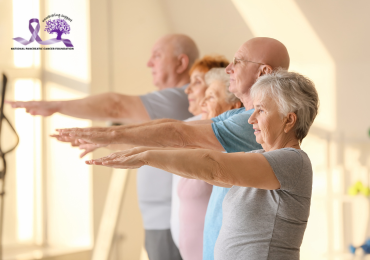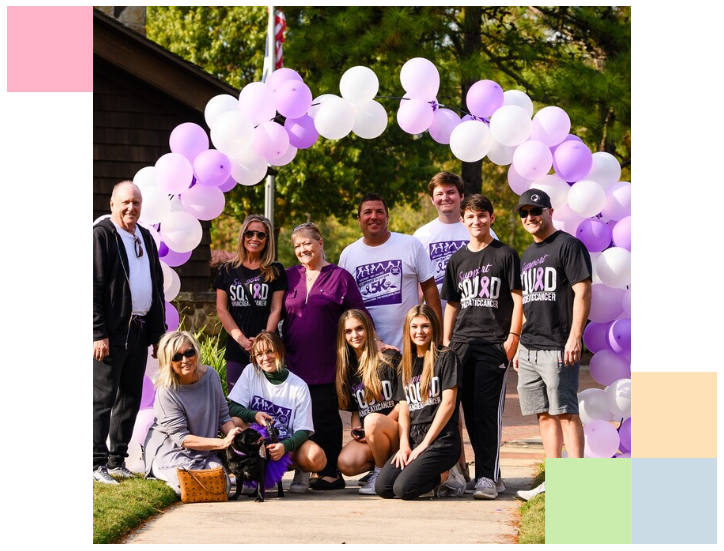Introduction
Facing pancreatic cancer treatment can be exhausting. Many patients feel their energy levels drop during this time. This is normal, but it doesn’t have to stop you from staying active. Regular, simple exercises can help boost your energy and improve your well-being.
Staying active doesn’t mean pushing yourself too hard. There are gentle activities that can make a big difference. By doing some light stretching and easy movements each day, you can support your body and mind. It’s all about finding the right balance to keep you feeling good.
Incorporating mindful exercises helps manage stress and increase vitality. The aim is to enhance your quality of life without pushing your limits. Through easy exercises and focused breathing, you can maintain energy and find moments of calm.
Understanding Energy Levels During Treatment
Energy levels can change a lot during pancreatic cancer treatment. Many patients find they get tired easily. This fatigue might result from the treatment itself, such as chemotherapy, or from the body working hard to heal. Understanding this can make it easier to handle day-to-day activities and know when to take it easy.
Fatigue can feel different for everyone. It might be hard to concentrate or you might feel weak. This is where gentle exercises come in. Moving even a little can help improve how you feel. Exercise boosts blood flow, which can help you feel more awake. It also encourages endorphins, which are natural chemicals in the body that make you feel good.
Make sure to listen to your body. On days when you feel more tired, it’s okay to rest. But when you have energy, even a short walk can help. Building a routine, like exercising at the same time each day, can make it easier to keep active without overdoing it.
Keep track of how you feel. A simple journal about your energy can help. Look for patterns, like which times of day you feel most energetic, and plan activities then. This can help you make the most of your energy and take care of yourself better.
Gentle Stretching and Flexibility Exercises
Stretching can be a great way to keep your body flexible and relaxed. It doesn’t take much time, but it can make a big difference. Gentle stretches help keep muscles loose and joints moving smoothly. They are simple to do at home, and you don’t need any special equipment.
Here are some stretching exercises to try:
- Neck Stretches: Slowly tilt your head to one side, bringing your ear towards your shoulder. Hold for a few seconds, then switch sides.
- Shoulder Rolls: Gently roll your shoulders forward, then backward. This helps release tension in the upper body.
- Side Stretches: Stand or sit with feet shoulder-width apart. Raise one arm and lean to the opposite side for a side stretch. Repeat on the other side.
- Back Stretches: Lie on your back and pull your knees to your chest, hugging them gently. This releases tightness in the lower back.
- Ankle Circles: While sitting, lift one foot off the ground and rotate your ankle in circles. Switch feet after a few rotations.
When stretching, move slowly. Breathe deeply and try to relax. Do these exercises regularly to help increase flexibility and reduce stiffness. If you feel any pain, stop and rest. Adjusting stretches to your comfort level is important to avoid straining muscles.
Low-Impact Aerobic Activities for Vitality
Low-impact aerobic exercises are excellent for boosting energy without causing stress on the body. These activities are gentle and help improve cardiovascular health while adding a little vigor to your day. They can also enhance mood and help manage fatigue. The key is to find exercises that feel comfortable and enjoyable.
Consider these low-impact exercises:
- Walking: A simple walk around your neighborhood or garden for 15-20 minutes can lift your spirits and increase energy levels. Walking can be adjusted in pace and length to match how you feel.
- Swimming or Water Aerobics: Water exercises are kind to the joints and can be both relaxing and invigorating. Even light swimming or water walking can be beneficial.
- Cycling: Using a stationary bike allows for a controlled workout that strengthens leg muscles and improves stamina. You can cycle at a leisurely pace that suits your needs.
- Tai Chi: This gentle martial art, often described as “meditation in motion,” helps balance, flexibility, and mild aerobic benefits. It’s a calming way to stay active.
- Dancing: Dancing at home to your favorite music brings joy and movement together. It’s a fun way to sneak in some exercise without it feeling like a chore.
Always start slowly and pay attention to how your body responds. It’s okay to rest or modify the activities to suit your current energy level. Consistent, low-intensity activity can help you feel more energized over time.
Mindful Breathing and Relaxation Techniques
Managing stress and finding moments of calm are crucial while undergoing pancreatic cancer treatment. Mindful breathing and relaxation techniques can help decrease stress and increase energy. These practices are easy to perform and require no special equipment.
Deep breathing exercises are a good start. Find a quiet spot, sit or lie down comfortably, and follow these steps:
- Inhale Slowly: Breathe in slowly through your nose, counting to four. Feel your chest and belly expand as the air fills your lungs.
- Hold: Hold your breath for a count of four, letting the air settle in your chest.
- Exhale Gently: Release your breath slowly through your mouth, counting to four. Focus on letting go of any tension as you exhale.
- Repeat: Continue this cycle for a few minutes, concentrating on the rhythm and feeling of your breath.
Progressive muscle relaxation is another technique:
– Tense and relax different muscle groups in your body, starting from your toes and moving up to your head. Hold the tension for a few seconds and then release. This helps to relieve built-up tension and promotes relaxation.
Mindfulness meditation can also be beneficial. Spend a few moments being present, noticing your breath, and observing your thoughts without judgment. These relaxation techniques can help reduce anxiety and elevate your energy, providing a mental boost.
Conclusion
Taking care of yourself through simple exercises offers a pathway to maintain energy and improve your overall sense of well-being during pancreatic cancer treatment. Embracing gentle movements, from flexibility stretches to low-impact activities, can make a significant difference. Whether it’s setting aside a few moments each day for deep breathing or finding joy in a leisurely walk, these practices support physical health and mental clarity.
Remember that every little bit helps and consistency is key. Listening to your body and choosing activities that feel right can help you navigate treatment with better energy and positivity. Support systems, like friends and family, can join in too, turning exercises into moments of connection and encouragement.
Feel inspired to join our efforts in spreading awareness and support for those undergoing pancreatic cancer treatment. Visit the National Pancreatic Cancer Foundation to learn more about how you can help make a difference. Together, we can provide hope and strength to those in need.




